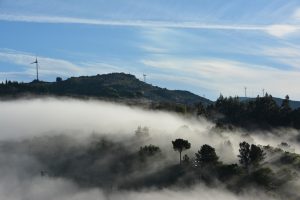Nordic Center in Shanghai, China, March 29-30, 2018
We are organizing a small international workshop at the Nordic Centre in Shanghai at Fudan University that will explore how technology changes the relationship between humans and animals. We will investigate how technology enables co-habitation and interactions between humans and animals. Technology literally and figuratively bridges the distance between them.
This workshop seeks to historicize the cultural relationship between humans, technology, and animals. We want to embed technology into the story of the transformation of the human-animal relationship in both urban and rural settings with technology as an integrated cultural mediator and an agent of change in how humans understand and relate to nature. Our working hypothesis that we seek to explore in the workshop is that technology not only separates, but also connects humans and animals, effectively closing the gap between the two.
This workshop aims to find the most productive meeting points between history of technology and environmental history when thinking about animals, including reaching beyond mainstream history to draw upon animal geography and Science and Technology Studies (STS) approaches. Research into human-animal relations is gaining traction in environmental historical scholarship, such as the recent edited volume The Historical Animal (2015). The field of history of technology has been quite slow at incorporating animals, in contrast to environmental history. Yet, incorporating technology into the history of human-animal relationships is absolutely critical, as demonstrated by Dolly Jørgensen’s article “Not by human hands: Five technological tenets for environmental history in the Anthropocene” (2014). As she shows, animal bodies as well as their relationship with humans is embedded in and modified by technologies. As technology changes, so do human-animal relations.
Each presenting participant will precirculate a new article-length work in draft form. During the workshop, participants will present this research, followed by an in-depth discussion from all participants. This model for running the workshop will focus on giving concrete feedback to the participants in order to make their work both individually stronger and to fit better together as an intellectual product with the other contributions. It is our intention to produce a journal theme issue from select contributions.
To be considered as a participant for this workshop, submit an abstract and an interest statement to workshop organizer Professor Finn Arne Jørgensen at fudan@newnatures.org by December 15, 2017. Notifications of acceptance will be made before the end of the year. If you have any questions, you can also contact us through this email.
Note that while there is no fee for participation in the workshop, participants will need to pay for their own travel to and accommodations in Shanghai. Citizens of 51 countries can stay in Shanghai for up to 144 hours (6 days) without a visa (see http://www.sh-immigration.gov.cn/listPageEn.aspx?lx=40&id=4414 for more details).
The workshop is arranged with financial support from the Nordic Centre in Shanghai.
